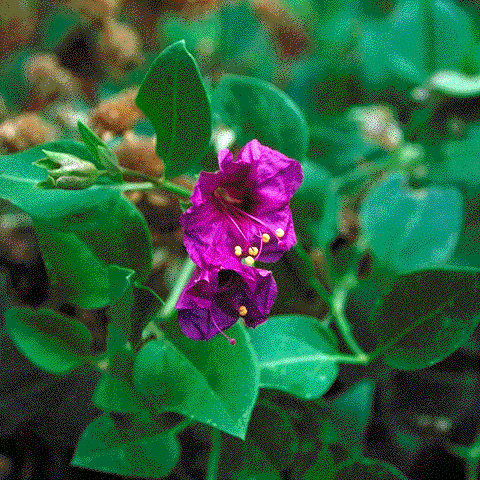

Can you think of a plant that wears a watch? If not, how do they manage to tell time so well?! Plants like evening primroses and four o-clocks are well named, because they can judge the amount of sunlight on their leaves and open their flowers only late in the day. Opening flowers at night helps them preserve the moisture in their precious nectar, the lure that draws hungry pollinators to their service.
Certainly brightly colored flowers can attract insects during the day,
but how can a plant do this in the dark? Although some of these flowers are white or
yellow, glowing in the moonlight, they also enlist the help of another powerful
sense—the sense of smell. Night-bloomers waft their mystical perfumes into the air,
where they are carried by water droplets that would evaporate in the hot, daytime sun.
Just as the smell of baking cookies attracts children, the promise of sweet nectar
draws pollinators, enabling the flowers to reproduce once again.

Listen to the Audio (mp3 format) as recorded by KTEP, Public Radio for the Southwest.
Contributor: Wynn Anderson, Centennial Museum, University of Texas at El Paso.
Desert Diary is a joint production of the Centennial Museum and KTEP National Public Radio at the University of Texas at El Paso.

Desert Four-O'clock. Photograph by Wynn Anderson.